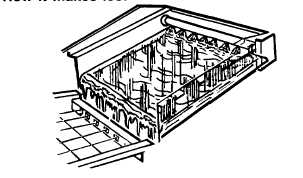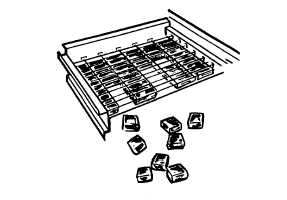|
| |
BEFORE OPERATING THE ICE MAKER
It is your responsibility to make sure that the ice maker:
•
has been installed where it is protected from the
elements.
•
is located so that the front is not blocked to
restrict incoming or discharge air flow.
•
is properly leveled.
•
is located in a well ventilated area with
temperatures above 550F (130C) and below
110°F (43°C). Best results are obtained at
temperatures between 700F (210C) and 90°F
(32°C).
•
is properly connected to a water supply and drain.
•
is properly connected to electricity. A 115 Volt,
60 Hz., 15 amp fused electrical supply is required.
NOTE: Time delay fuse or circuit breaker is
recommended.
•
is properly electrically grounded.
•
is not operated by anyone unable to use it
properly.
•
is used only for the job it was designed to
perform.
•
is properly maintained.
ICE MAKER OPERATION
How it makes ice:
1.
Water is constantly circulated over a freezing
plate. As the water freezes into ice the minerals in the
water are rejected. This produces a clear sheet of ice
with a low mineral content.
2.
When the desired thickness is reached, the ice
sheet is released and slides on to a cutter grid. The grid
divides the sheet into individual cubes.
3.
The water containing the rejected minerals is
drained after each freezing cycle.
4.
Fresh water enters the machine for the next ice
making cycle.
5.
Cubes fall into the storage bin. When the bin is
full the ice maker shuts off automatically and restarts
when more ice is needed.
2
|



